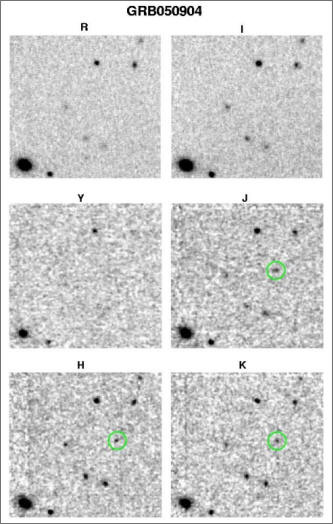Gamma-ray bursts (GRBs) are believed to originate in the catastrophic death of massive stars and are among the most energetic events observed in the universe at all epochs. Most GRBs are accompanied by optical afterglows that can initially be several magnitudes brighter than the brightest quasars known. As many as 20% of all GRBs are estimated to occur at z > 5; GRB 050904 has recently been identified at z = 6.3.
Given their association with massive star formation, GRB afterglows may be a better probe than quasars for studying nascent galaxies at very high redshift. However, heavily obscured GRBs or events occurring at z > 6 have most of their optical light extinguished by local dust or neutral gas in the IGM. Several of these optically dark GRBs have been localized, but never followed up with IR spectroscopy. A high-throughput, high-sensitivity IR spectrometer is essential for studying the host environment that powers the GRB event at high redshift.


Optical (R,I) and near-IR (Y,J,H,K) images of GRB050904, a burst whose
redshift was estimated at 6.28 from its lack of optical flux. (L. Cowie) |
